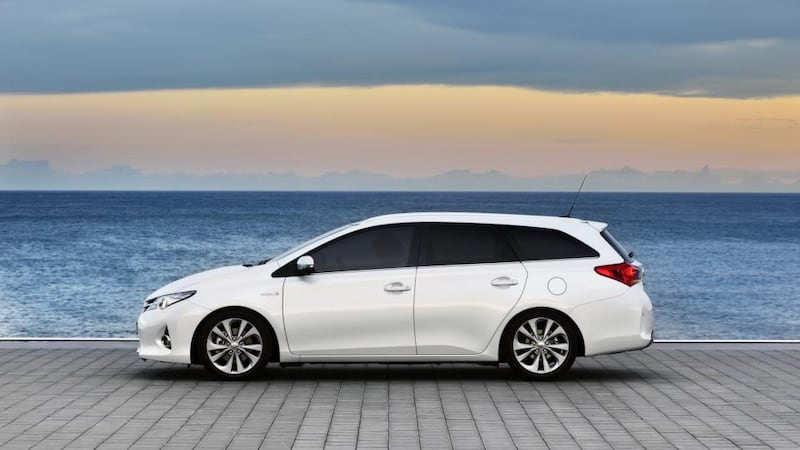Qoros says it wants to see 10 per cent of its future sales coming from Europe. The new car maker, jointly owned by Chinese Chery Automobiles and the Israel Corporation, already has its 3 saloon on sale in Slovakia, which is operating as a test market. The 3 retails for about €20,000 in southern Europe but comes with the carrot of contract-free 3G connectivity for its on-board systems.
And although Qoros is still a car maker you’ve never heard of, big plans are afoot. It plans to expand to all European markets by 2016, with saloon, hatch, crossover and SUV models. The company has also said it wants to appeal to premium customers with its quality and equipment.
Toyota upgrades its Auris models
Toyota Ireland has just announced an equipment upgrade for the Auris and Auris Sport Tourer estate models. The new Sol models, which will sell for €22,100, include heated front seats, 16in alloys, Bluetooth phone connection, reversing camera and 6inch colour touch screen.

David Shannon, managing director of Toyota Ireland, said: “We are delighted to announce the addition of the exciting new Sol grade to the Auris line-up. The Auris Sol retains Auris’ signature sleek exterior styling, while the addition of a suite of interior features and technological specifications contribute to a more premium driving experience.”
Commission targets heavy duty vehicles to reduce C02 emissions
The European Commission has set out a new plan to reduce the carbon emissions of the continent's buses, coaches and heavy goods vehicles. According to the commission's estimates, CO2 emissions from that fleet has grown by as much as 36 per cent between 1990 and today.
The EU says it will implement “mandatory limits on average CO2 emissions from newly registered heavy duty vehicles (HDVs) , as is already done for cars and vans.
“Other options could include the development of modern infrastructure supporting alternative fuels for HDVs, smarter pricing on infrastructure usage, effective and coherent use of vehicle taxation by member states and other market-based mechanisms. An impact assessment will be done to identify the most cost-effective option or options.”
The environmental pressure group Transport and Environment has criticised the European authorities, saying that the proposals are far too little, far too late.
William Todts, senior policy officer at Transport and Environment, says: “Lorry fuel efficiency has remained stagnant for 20 years, but while the US has quickly set standards for American trucks to improve their fuel economy, Europe is just treading water.
“Fuel economy standards will slash fuel bills, reduce oil and diesel imports and cut climate- changing emissions. It is time for the commission to stop strategising and finally introduce robust standards for Europe’s lorries as well.”
That is not a point of view the Irish Road Haulage Association has any truck with. Eoin Gavin, president of the association, said, “Ireland and Europe are streets ahead of the US. Here in Ireland, hauliers and drivers are encouraged to save fuel by working closely with companies such as Enprova, which provides support to measure energy efficient savings.
“Driver training is big with the truck manufacturers, and drivers are very conscious of achieving better miles per gallon. We are investing millions in new truck technologies every day, and they are all focused on saving energy.”
Cathal Doyle of Fleet Transport magazine said: “Clearly, any steps to improve fuel economy of heavy goods vehicles are in the interests of everyone. However, in virtually any measurable aspect, a truck from today is incomparable to one from 1994.
“If the focus has been on reducing emissions, to the extent that a Euro VI truck today emits 98 per cent less regulated emissions compared to one from 1990, trucks’ fuel consumption – and therefore CO2 emissions – have also decreased by over a third since 1970 . . . Drivers are also better trained to drive efficiently compared to 20 years ago.”













